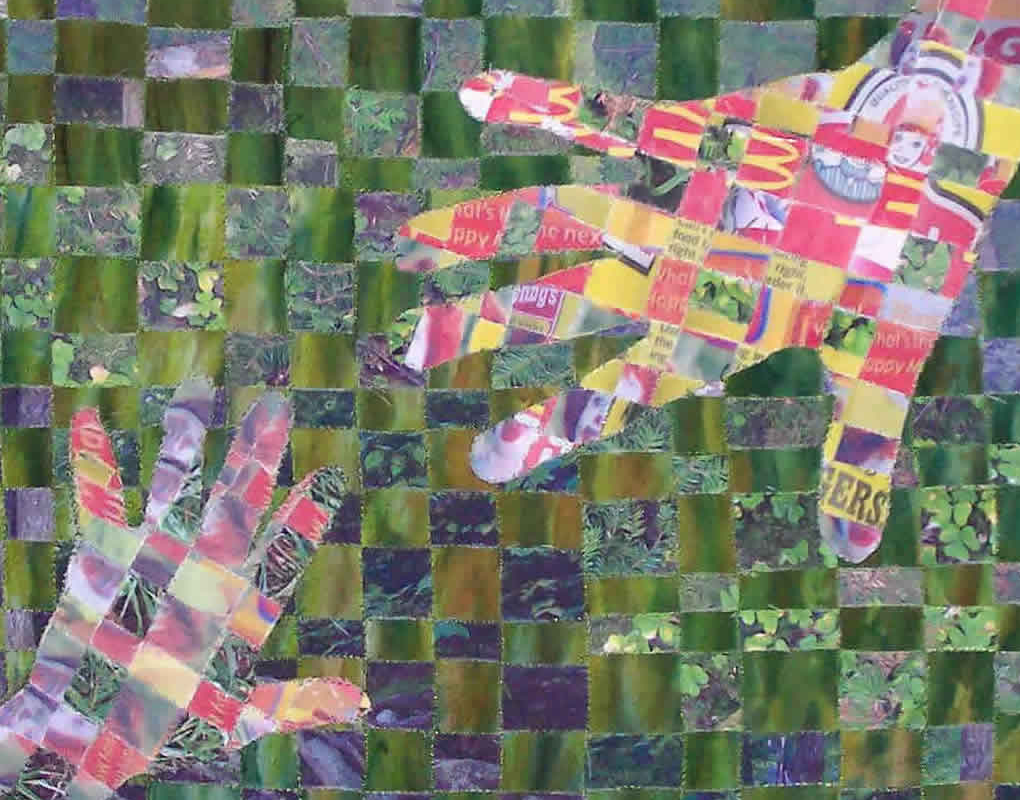| |
| Artist Statement |
| Fabric Gallery |
| Ceramic Gallery |
| Healing Blankets |
| Islands of Habitat |
| Shibori Scarves |
| Resume |
| Islands of Habitat |
|
I have been working as a landscape - garden designer for more than twenty years. Plants and flowers are used in my designs for gardens, as an artist would use paint from his pallet applied to a canvas. Observing the changes in my community over the years, has caused me to redefine the functions of a garden, and public parks. Our town not so long ago had many farms, and now it has many streets with lots of houses. The field next to my house used to be lit up on warm summer nights by hundreds of fire flies, now there is a built in pool. Where will the fire flies go? What has happened to them? Sprawl and development is eating up our open spaces, and because of this I believe we need to look for opportunities in our communities, to recreate habitats for wildlife. These spaces can be part of municipal parks, in school yards, landfills, deserted city lots, and your own backyard. These islands are also places where people can connect with nature, and their surroundings. Stewart Park in Exeter looks like any other park with benches for people to sit on to read, or enjoy the beautiful view of the river. It is a tranquil place located in the downtown area, and is an island of habitat. The center piece of the garden is a large tree trunk that looks like a whale, it was pulled from the river after a flood. This driftwood connects the park to the tidal river and the ocean, and the history of the New England town. It is set on a bed of gravel and stones, which help filter storm run off water from the abutting parking lot. There is a bed of grasses which serve as nesting material for birds. The bushes and trees serve as nesting sites and feeding stations. They all bloom with lovely flowers, that turn into fruit for the animals and birds. Even the flowers that are planted in the beds make seeds for food or nectar for humming birds and bees. The plants are hardy drought resistant plants that require very little care. The Powder House Park was planted with a group of students from a local public school. In this workshop students researched the Wood Thrush, and helped create and plant the garden. This bird is on the Audubon watch list, because of its severely declining population, due to lack of habitat. Plants in this garden includes, blueberry bushes, viburnum, spice bush and goldstrum, to name a few. |
See My Blog for Past and Current Events! Contact The Artist At: debbb1@comcast.net Check out my new brochure about Art and Environmental Education |
